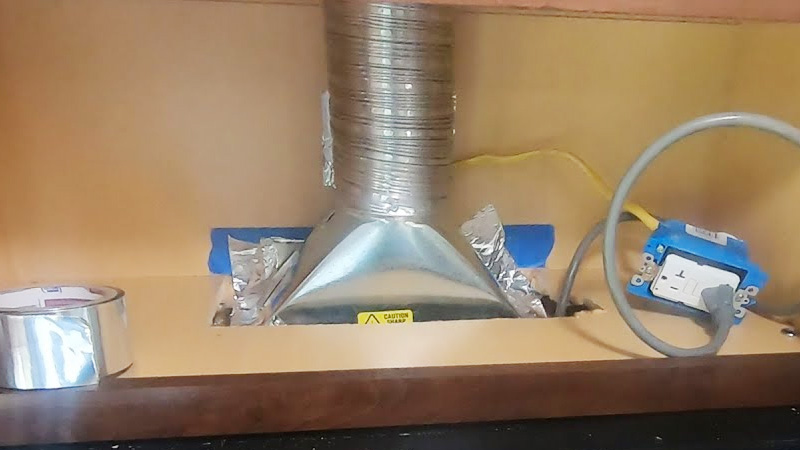When it comes to home appliances, it’s always helpful to find ways to repurpose them for other uses. One question often arises is whether you can use your dryer vent for your range hood.
On the surface, it might seem like a clever way to save time and money, but before you go ahead and connect the two, there are a few things you need to know.
In this article, we’ll explore the ins and outs of using a dryer vent for a range hood, including the potential risks and benefits, so you can make an informed decision for your home.
The range hood can be ducted through a dryer vent. However, all of it is highly reliant on the range hood’s Cubic Feet Per Minute (CFM).
The 4-inch duct is too small for most range hoods. A 4-inch duct is suitable for range hoods under or rated at 400 CFM.
The minimum duct sizes must be considered to ensure the range hoods are properly ducted. You should note down the following sizes for your desired CFM range hoods.
- Hoods of 1200 CFM require 10″
- Hoods of 900 CFM require 8″
- Hoods of 600 CFM require 6″
What Material Are Dryer Vents Made Of?
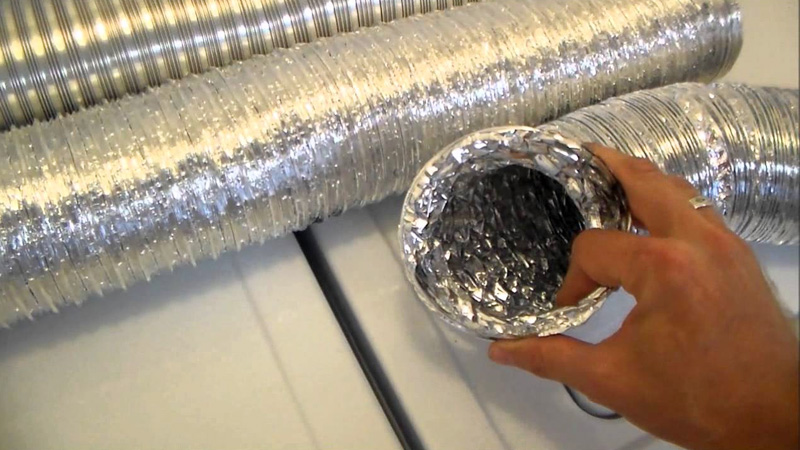
It is primarily for drying clothes that dryer vents exist. Using this dryer vent, you can safely and efficiently remove hot air and moisture from your clothes dryer.
It is important to know what the material is made of when it comes to using them for range hood venting.
In most cases, metal is used to construct dryer vent components. It is recommended not to use plastic dryer vents if they are available.
It is usually constructed from aluminum, steel, galvanized steel, or stainless steel. As well as being more durable, they are also more fire-resistant than plastic vents.
The polyvinyl chloride (PVC) in plastic vents is usually made of polyvinyl chloride (PVC). In comparison to metal, this material is lightweight and easy to install, but it may not be as heat resistant.
Are Dryer Vents Usable For Range Hoods Of Any Type?
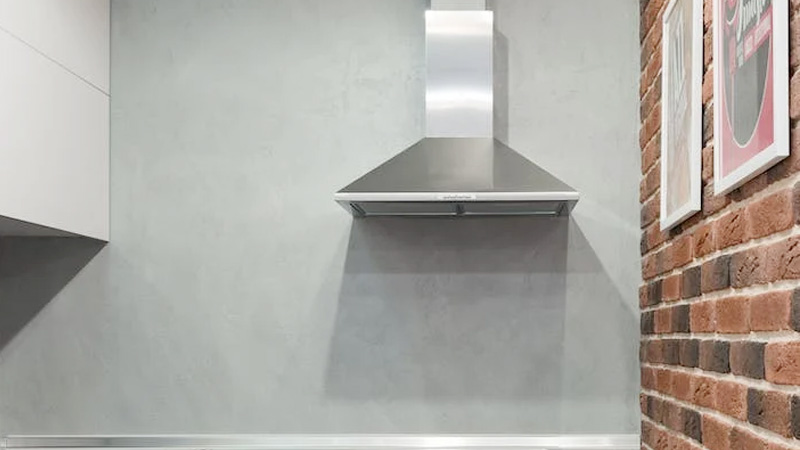
Do you want to know which type of duct to choose for your range hood? There are three types of ducts: flexible, rigid, and semi-rigid.
Despite their pros and cons, each has its own strengths and weaknesses. Consider your needs, taste, and budget before choosing a range hood.
Rigid Duct
Whenever you need a duct for your hood, the rigid duct is your best choice. A rigid duct is undoubtedly the best type of duct you can use. Enjoy its countless benefits after installing it once.
Success has something else to do with it. With this dryer vent, you won’t have to worry about putting a strain on your wallet or burdening your conscience.
Only range hood filters need to be cleaned—there is almost no maintenance involved. It is, therefore, essential to make it a habit to clean them frequently to avoid chaos in the future.
It is also important to note that these rigid ductworks are durable. What is the reason for this? With its magic ingredient, you’re good to go.
The majority of the materials are stainless steel. However, some ductwork parts are made of flimsy plastic or aluminum.
The lifespan of your range hood must exceed ten years. Interested in knowing what’s best?
As a result, fewer issues will arise, and its maintenance will be minimal. Even if you encounter problems occasionally, like lights burning out or control panels malfunctioning, you’ll still enjoy rigid ductwork.
When you choose the other types, you could get into deep trouble within a short timeframe. You might only have to wait a few months, or you might have to wait a year. Hang on!
How often do you cook? Do you still consider rigid ductwork to be a cost-effective and safe method?
You should, therefore, no longer be concerned. Using a dryer vent is a good idea for your range hood. Select ducts wisely by ensuring they are the right type.
Semi-Rigid Duct
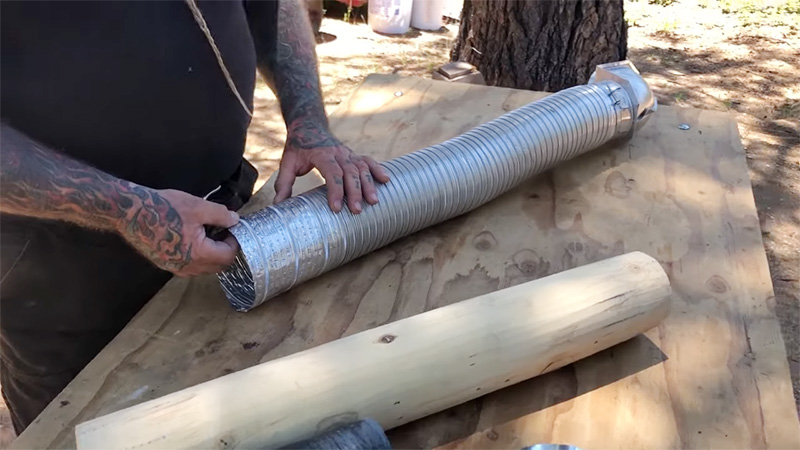
Are you thinking of using a semi-rigid duct for the range hood? Make sure you fully understand the pros and cons of semi-rigid ducts before making your decision.
During the last phase of globalization, the world suffered from pollution, which had dire consequences. Nobody can argue with that.
We are constantly battling pollution issues, whether air pollution, land pollution, or water pollution. You should consider that your hood range contributes to air pollution.
The exhaust fumes of your homes must cause you to pay special attention as this is a severe problem. It is the complex construction of the buildings that negatively affects the indoor air quality.
Using the dryer vent as a range hood will alleviate the problem, which is worsening every day. Can you use a dryer vent as a range hood?
You would be wise to purchase an HVAC system for your home. Inhaling fresh air inside the home will reduce the chances of illnesses as exhausting air will be able to escape.
Range hoods can be fitted with a semi-rigid duct instead of a flexible one. Whenever it comes to range hoods, flexible ducts are a no-no. Please keep this in mind.
If possible, avoid using plastic ducts and composite hoses. For semi-rigid ducts, choose aluminum ducts, and if you have a less preference, choose flexible aluminum ducts.
Some composite and plastic ones are easier to break down and have thinner pieces. It will be a strain on your pocket to have to keep replacing them.
Where To Install Dryer Vent For Range Hood Exhaust?
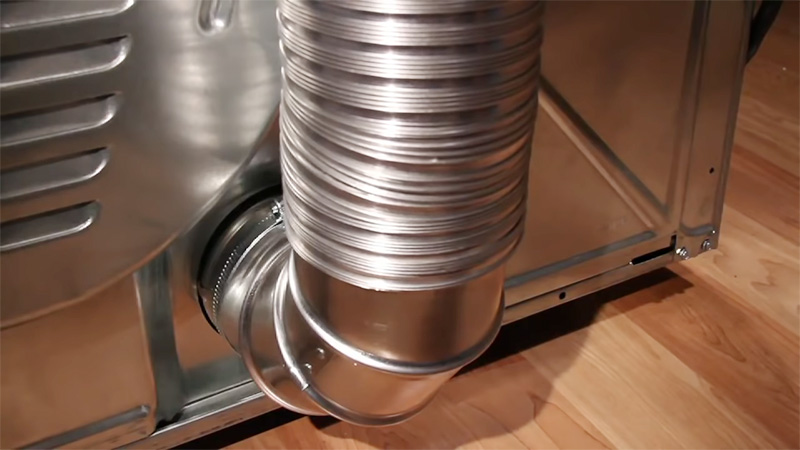
You have several options for installing a dryer vent for your range hood exhaust. You should choose the one that is right for the location of your kitchen and the type of ventilation system you have.
In traditional installations, it is usually best to connect a wall vent directly to your dryer duct. A vented system is ideal if you have access from the outside and can easily attach the pipe.
If not, then a roof or soffit vent would be more appropriate. The best thing about roof vents is that they can be connected to an existing exhaust system.
As for soffit vents, they offer discreet installation under the eaves of your home and are often associated without ductwork.
Whatever option you choose, ensure it complies with local building codes and is properly installed to ensure optimal performance.
Are There Any Building Codes For Using A Dryer Vent For Range Hood Exhaust?
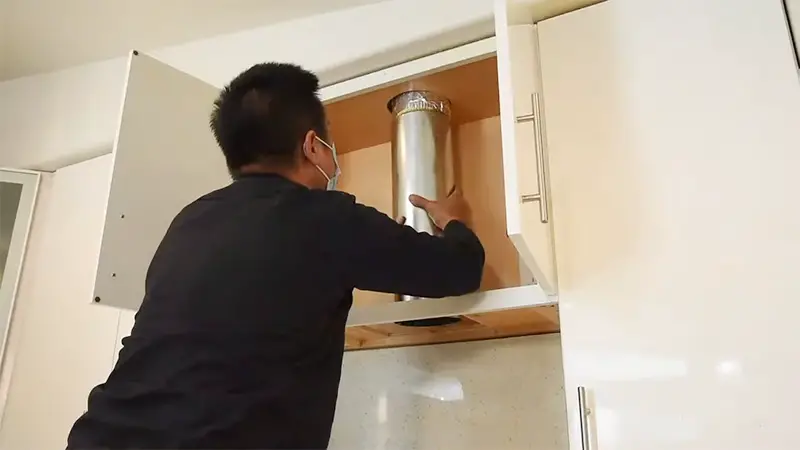
To vent range hoods outdoors, you need to use a dryer vent. However, you should be aware of any building codes related to installing a dryer vent before you commit to utilizing a dryer vent.
There are some clear guidelines you can follow to ensure you correctly install your dryer vent. Among other things, all vents should be securely fastened and have an outdoor termination point far away from windows and doors.
Moreover, ducts should be free of debris like lint and dust, which can clog them. In addition, in order to remain effective and safe, ventilation systems must comply with all local and building codes.
Read the ICCSAFE codes for Chapter 15 exhaust systems in 2021. Neither the regulations nor the guidelines specifically prohibit using a dryer vent to exhaust a range hood.
Nevertheless, this chapter instructs the reader to follow the instructions provided by the manufacturer. Using that vent might violate the building codes if the dryer vent manufacturer doesn’t allow use for range hood exhaust.
Benefits Of Using Dryer Vent To Range Hood
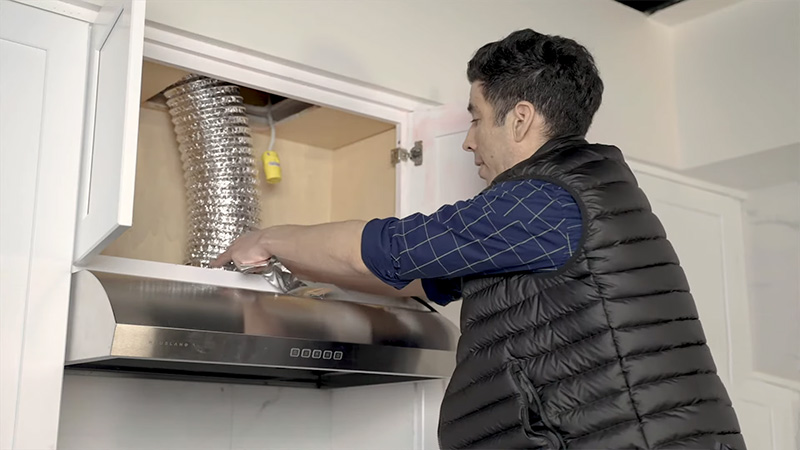
The dryer vent is like a semi-rigid vent. The benefits of semi-rigid vents are all available to you. It is important to note that dryer vents offer you an additional advantage.
Range hood exhaust can be achieved using a dryer vent rather than traditional ductwork. It is also easy to maintain, making it an excellent choice for many DIYers.
You will save money and time by plugging the existing dryer vent into your range hood exhaust system if you use the right materials and follow the right steps.
Typically, dryer vents are less expensive than traditional ductwork. In addition, no additional parts or special tools are needed to install it.
You only need an adapter that fits with your existing vents. This ventilation method requires no additional material to be purchased or installed, so it will be much quicker and easier than other methods.
Drawbacks Of Using Dryer Vent As Range Hood Duct
Range hood ducts made out of dryer vents are an efficient and affordable way to exhaust kitchen air, but they also have some downsides. Homeowners must understand the potential risks and mitigation techniques before switching.
Limited airflow
Generally speaking, dryer vents have a smaller diameter than range hood ducts. Consequently, it can restrict airflow and negatively impact the range hood’s performance.
They Don’t Tend To Handle Grease
The main disadvantage of dryer vents is that moisture and grease cannot pass through them. The range hood in the kitchen removes grease and moisture from vapors and smoke produced during cooking.
Dryer vents do not have the proper insulation or moisture barriers to protect against these factors. To avoid fire hazards in their homes, you must ensure that they are safe from them.
When using a dryer vent as a range hood duct, homeowners should invest in additional insulation materials.
Final Words
The dryer vent can be used to exhaust range hoods in some situations. Ensure the dryer vent you will use with a range hood is up to code and can be used safely and effectively.
Furthermore, the range hood must be installed correctly and efficiently in order to maintain a proper ventilation flow.

